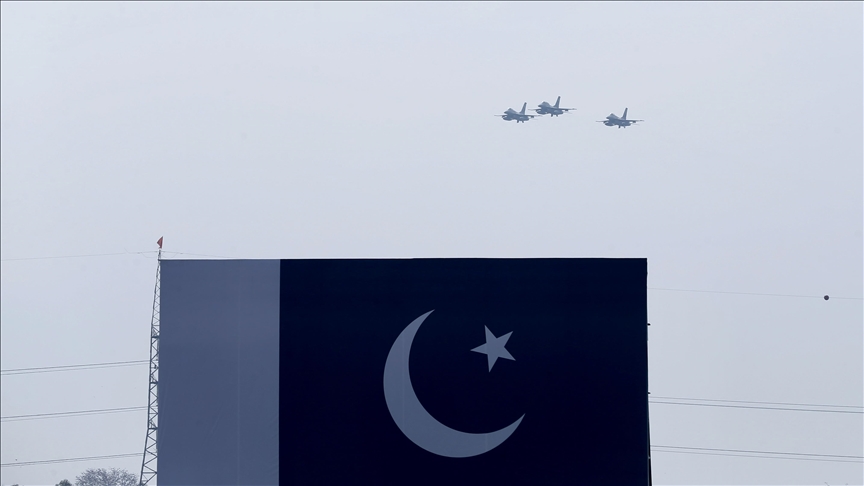OPINION - Tech-fueled conflict: Emerging trends in global arms industry
Developments in the art of war are set to drive broader changes in military priorities and expand defense-industrial cooperation beyond traditional Western and Russian partners

The author is a South Asia security researcher at the University of Technology Sydney
ISTANBUL
The recent full-blown military confrontation between India and Pakistan marked a pivotal moment in the international security and landscape of the arms industry. The four-day military crisis was closely followed across the globe, as both India and Pakistan showcased their newly procured military hardware and systems. In many ways, it was the first hot clash of a new cold war, where Chinese-origin jets and missiles were employed against Western and Russian arms and technology. The range of hardware and technologies employed was extensive for a conflict of such short duration, signaling a new battlespace where advanced technologies enable sharper escalations and shorter reaction times.
On May 7, India carried out missile strikes targeting areas in mainland Pakistan and Pakistan-administered Kashmir, in response to a deadly militant attack on April 22 in Pahalgam, located in Indian-administered Kashmir. The subsequent days saw a more intense escalation than the 2019 Pulwama-Balakot standoff. In the first air battle on May 7, both India and Pakistan deployed foreign-procured jets—French Rafales for India and Chinese J-10Cs for Pakistan. Notably, both sides had introduced these jets after their last aerial clash in 2019, with New Delhi claiming that the Rafale would match Pakistan’s Chinese jets. However, Pakistan shot down a French Rafale with a PL-15 beyond visual range (BVR) missile fired from a J-10C. Beyond the immediate headlines, this event could potentially spark new arms races in various regions, as the Chinese defense industry—backed by the Chinese government—seeks to showcase its military technology.
New emerging players
Historically, developing countries procured expensive Western—European and American—fighter planes, missiles, tanks, ships, and submarines to meet their defense needs. The alternative was Russian hardware, which was more affordable and came with fewer political strings attached. New suppliers have emerged as serious contenders: China and Türkiye. China, an economic powerhouse, has yet to significantly expand its share in the global arms industry. According to the Stockholm International Peace Research Institute (SIPRI), over the past five years, China’s share of global arms exports stood at 5.9%, with nearly two-thirds of its exports going to Pakistan. Beyond Pakistan, the Chinese defense industry now has an opportunity to attract new customers, especially those evaluating the performance of its products during the recent Indo-Pakistan conflict.
The emergence of Chinese defense technology and systems as viable alternatives will prompt countries in regions such as the Gulf, Eastern Europe, East Asia, Africa, and Latin America to expand their political and defense engagements with China. Their defense priorities will shift toward acquiring the new technologies demonstrated by Pakistan during the confrontation with India. The focus will move away from traditional tanks, submarines, and fighter jets, toward armed drones, loitering munitions, air defense systems, long-range artillery, and long-range air-to-air missiles. These technologies are capable of evading radar and striking with speed and precision—hallmarks of modern warfare.
Meanwhile, as militaries around the world reassess the battlefield environment following the four-day India–Pakistan confrontation, Türkiye is also emerging as a potential defense industry partner. Rather than wars of attrition, the introduction of armed and small drones has enabled short, sharp confrontations with swift military actions to achieve political goals. Many will now invest in establishing dedicated drone divisions to complement their strike corps and gain operational advantages on the battlefield.
Pakistan and India entered this conflict after learning and incorporating lessons from the ongoing Russia-Ukraine war and the Azerbaijan-Armenia conflict. The next battlefield will see belligerents drawing lessons from the May 2025 India-Pakistan confrontation. Such developments are set to drive broader changes in military priorities and expand defense-industrial cooperation beyond traditional Western and Russian partners. China and Türkiye are poised to deepen the defense collaborations they make with developing countries across various regions. In response, their defense industries will need to innovate and offer cost-effective solutions, as global demand for drones, loitering munitions, and layered air defense systems continues to grow.
*Opinions expressed in this article are the author's own and do not necessarily reflect Anadolu's editorial policy.
Anadolu Agency website contains only a portion of the news stories offered to subscribers in the AA News Broadcasting System (HAS), and in summarized form. Please contact us for subscription options.







